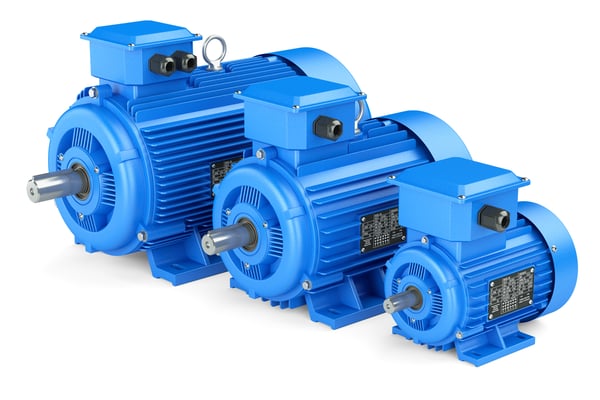Electric motors are typically hidden, but they are used by many types of equipment. In all types of buildings, hydraulic and mechanical systems are heavily dependent on motors. They can be found in pumps, fans, air conditioning compressors and chillers, to name a few examples. Given their widespread use, engines consume more than 40% of the world's electricity.
Building owners can significantly reduce energy bills by improving engine efficiency. There are two main ways to achieve this, which can be combined for best results:
- Replacement of old and inefficient engines with more modern units.
- Control the speed of the motors according to their workload.
An adequate power supply is essential for electric motors. If a motor is exposed to frequent voltage fluctuations, its lifespan will be drastically reduced. Before upgrading your motors and adding speed controls, make sure your power supply has stable voltage and frequency.
Improve your building's energy efficiency with an electric motor upgrade.
Upgrading to high-efficiency motors
When upgrading a building's motors, the best recommendation is to look for units with recognized efficiency ratings. The National Electrical Manufacturers Association (NEMA) is the industry authority in North America, setting standards for many categories of electrical equipment. For motors, NEMA Premium is the highest efficiency rating available as of September 2019.
Motors manufactured outside the US follow International Electrotechnical Commission (IEC) standards. The highest efficiency level for IEC engines as of September 2019 is IE4 Super Premium Efficiency . An even higher efficiency rating is being developed that will offer 20% savings over IE4: IE5 Ultra Premium Efficiency .

Another important factor is acquiring the right power. Electric motors can operate close to rated efficiency under various load conditions. However, they experience a drastic loss of efficiency when the load drops to around 50%. An oversized engine also has a higher price and higher maintenance costs.
How controlling engine speed increases efficiency
Many electric motors are subject to variable load conditions, which means that their rated power is not used all the time.
- Engines are often left running at full power when not needed, wasting energy and potentially causing performance problems. For example, this results in excessive pressure in pumping systems and excessive ventilation in air handlers.
- A simple control solution is to use the engine intermittently, but this can have a negative effect in some cases. For example, if an area of a building requires continuous ventilation, the air handler cannot operate intermittently.
Adjusting the speed of a motor according to its workload is a much better solution. The motor can operate continuously, consuming less energy than an intermittent motor. For example, a motor at 70% speed consumes less energy than an identical motor running 70% of the time. The best method for controlling engine speed depends on its size:
- For motors above 1 HP, electrical engineers typically recommend a variable frequency drive, or VFD. This device reduces voltage and frequency below rated values to reduce shaft speed (rpm).
- For applications below 1 HP with variable workload, the best recommendation is an electronically commutated motor, also known as a brushless DC motor. They have built-in speed controls and do not require VFDs.
Please note that some equipment comes with factory-installed motors and warranties may be voided by incorrect replacement. In these cases, you should look for compatible engines labeled as OEM, which means “original equipment manufacturer”. If you plan to completely upgrade a piece of equipment rather than just a motor, ask your supplier for the most efficient motor that can be factory installed in the new unit.
Conclusion
When upgrading engines, the shortest payback period is typically achieved with engines that have a long operating schedule. Speed controls, in particular, have a better effect when engines operate at partial load for long periods.
Consider that HVAC systems represent the largest share of consumption in most residential and commercial buildings. Because electric motor upgrades can improve HVAC efficiency, the potential savings are significant. High-efficiency motors with speed controls can also save a lot of energy when used in pumping systems.

